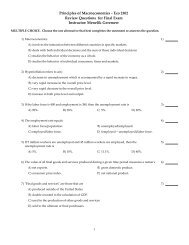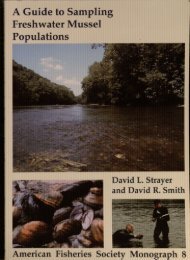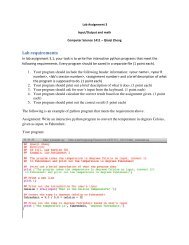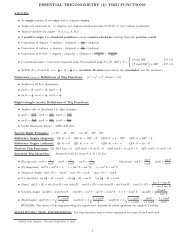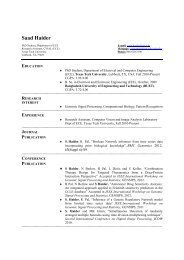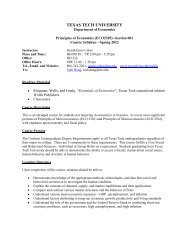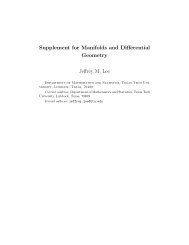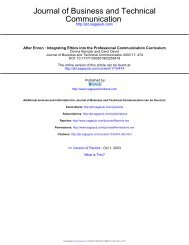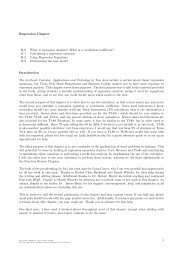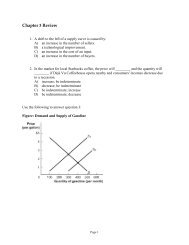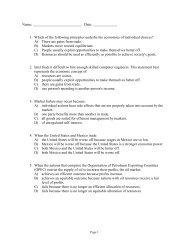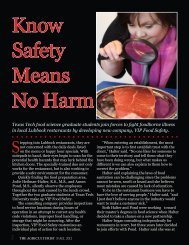Download - MyWeb - Texas Tech University
Download - MyWeb - Texas Tech University
Download - MyWeb - Texas Tech University
You also want an ePaper? Increase the reach of your titles
YUMPU automatically turns print PDFs into web optimized ePapers that Google loves.
The 2012 Season of the Chan Chich Archaeological Project<br />
The greatest hindrance to working at the site is<br />
the appallingly thick vegetation in that part of<br />
the forest, the result of 2010 hurricane damage.<br />
Depending on the scope of the investigations,<br />
days if not weeks of vegetation clearing would<br />
be necessary to adequately assess the site and<br />
map surface artifact scatters. Logistical issues<br />
exist as well, including lodging and labor.<br />
However, the project holds great potential to<br />
inform about not only the San Pedro Maya but<br />
also Colonial commercial enterprises in Belize<br />
during the early twentieth century.<br />
The Prehistoric Ruins of<br />
Kaxil Uinic<br />
Prior to the opening of Chan Chich Lodge in<br />
the late 1980s, there was no controversy over<br />
the ruins of Kaxil Uinic, probably because no<br />
one had even tried to visit them for over 50<br />
years. As noted above, Kaxil Uinic was to be<br />
the focus of excavations for the Third Marshall<br />
Field Archaeological Expedition to British<br />
Honduras under the direction of Thompson<br />
and sponsored by the Field Museum of Natural<br />
History in 1931. How Thompson selected Kaxil<br />
Uinic for study is not entirely clear. The first<br />
mention of ruins near Kaxil Uinic that I have<br />
been able to find is a curious entry by Maler<br />
(1910:150), who reports the following account<br />
from his 1895 expedition through the Peten:<br />
The people of Chúntukil assert that about<br />
the middle of the nineteenth century<br />
the ruins of Tikal were discovered by a<br />
party of hunters from their settlement,<br />
who had penetrated the eastern forests.<br />
Discerning the lofty temples from a<br />
distance they had gone to see what they<br />
were. The people know of no other<br />
ruins except only by hearsay of the socalled<br />
casa cerrada near Kaxilvinic...<br />
or “Man in the mountain,” which is a<br />
well preserved massive structure with<br />
neither entrances nor decoration. Other<br />
Indians have told me of this ruin, but<br />
they said it consisted of two buildings<br />
placed close together, and they called<br />
this site of ruins Polcoh (Cabeza de<br />
Leon).<br />
The next mention of ruins near Kaxil Uinic is in<br />
a 1928 article by Frans Blom (1928:170), who,<br />
in a discussion about ball courts, mentions:<br />
A ball court was found among a large<br />
group of mounds and completely ruined<br />
buildings located a few hours’ ride<br />
southwest or Kashuinik, a small Maya<br />
Indian settlement in British Honduras.<br />
These ruins are situated just over the<br />
border in the Department of Peten, of<br />
Guatemala, and the place has no name.<br />
Thompson referred to Blom’s report (and<br />
apparently got the date wrong, unless he<br />
speaking of a subsequent trip by Blom) in the<br />
memorandum (Memorandum, page 4, FM)<br />
in which he proposed the expedition to Kaxil<br />
Uinic:<br />
Kaxwinik was cursorily visited by<br />
Mr Frans Blom of the department of<br />
Middle American Research, Tulane<br />
<strong>University</strong>, La. in 1929, but not<br />
examined in detail. The site is not very<br />
large, but was undoubtedly a center<br />
of ceremonial importance, as Mr<br />
Blom reports finding a Ball court of<br />
the type used in the Maya ceremonial<br />
game, as well as two very weathered<br />
stelae. There is a good possibility that<br />
a careful search and clearing of the<br />
forest would reveal fallen sculptured<br />
monuments… However, at Kaxwinik<br />
work would be concentrated more on<br />
the outlying dwelling sites, which,<br />
although somewhat unpretentious, are<br />
more likely to yield good results, for in<br />
these burials are likely to be found.<br />
38



